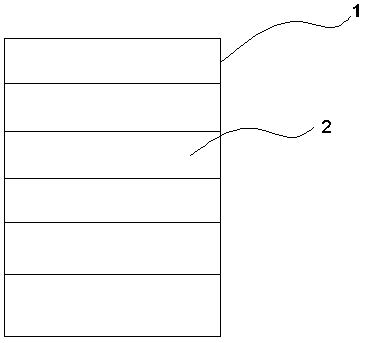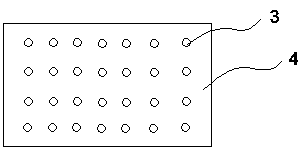Bioculture method for entomopathogenic nematodes
An entomopathogenic nematode and culture method technology, applied in the field of biological reproduction and culture, can solve the problems of slow inoculation and low efficiency, and achieve the effects of simple and feasible steps, low cost and improved survival rate
- Summary
- Abstract
- Description
- Claims
- Application Information
AI Technical Summary
Problems solved by technology
Method used
Image
Examples
Embodiment 1
[0031] S1. Preparation of inoculum: according to the required concentration, prepare an entomopathogenic nematode inoculum with a concentration of 10,000 tails / ml;
[0032] S2. Inoculation: Soak the larvae of the greater wax moth into the entomopathogenic nematode inoculum obtained in step S1 at 20°C; the ratio of the number of the greater wax moth larvae to the entomopathogenic nematode in the inoculum is 1:10000, and when the soaking time is 5 minutes, 75% The greater wax moth larvae can be taken out when the greater wax moth is suspended in motion; the room temperature for inoculation is 20°C;
[0033] S3. Cultivation: Move the soaked live S. mellonella larvae obtained in step S2 onto a stackable tray covered with sterilized cloth, and continuously feed it with 0.1% under the conditions of 20° C. and 93% humidity. The saturated water vapor obtained by atomizing the sodium hydroxide solution was incubated at constant temperature and humidity;
[0034] S4. Detection: On the ...
Embodiment 2
[0037] S1. Preparation of inoculum: according to the required concentration, prepare an entomopathogenic nematode inoculum with a concentration of 20,000 tails / ml;
[0038] S2. Inoculation: Soak the larvae of the greater wax moth into the entomopathogenic nematode inoculum obtained in step S1 at 22°C; the ratio of the number of the greater wax moth larvae to the entomopathogenic nematode in the inoculum is 1:20000, and when the soaking time is 7 minutes, 80 The larvae of the greater wax moth can be taken out when % of the greater wax moth is feigned dead; the room temperature for inoculation is 22°C;
[0039] S3. Cultivation: move the soaked live S. mellonella larvae obtained in step S2 onto a stackable tray covered with sterilized cloth, and continuously inject 0.3% under the conditions of 25° C. and 95% humidity. The saturated water vapor obtained by atomizing the sodium hydroxide solution was incubated at constant temperature and humidity;
[0040] S4. Detection: On the 7t...
Embodiment 3
[0043] S1. Preparation of inoculum: according to the required concentration, prepare an entomopathogenic nematode inoculum with a concentration of 50,000 tails / ml;
[0044] S2. Inoculation: soak the larvae of the greater wax moth into the entomopathogenic nematode inoculum obtained in step S1 at 25°C; the ratio of the number of the larvae of the greater wax moth to the entomopathogenic nematode in the inoculum is 1:30000, and when the soaking time is 7 minutes, 80 The larvae of the greater wax moth can be taken out when % of the greater wax moth is feigned dead; the room temperature for inoculation is 25°C;
[0045] S3. Cultivation: move the soaked live S. mellonella larvae obtained in step S2 onto a stackable tray covered with sterilized cloth, and continuously pass through 0.6% under the conditions of 28° C. and 95% humidity. The saturated water vapor obtained by atomizing the sodium hydroxide solution was incubated at constant temperature and humidity;
[0046] S4. Detecti...
PUM
 Login to View More
Login to View More Abstract
Description
Claims
Application Information
 Login to View More
Login to View More - R&D
- Intellectual Property
- Life Sciences
- Materials
- Tech Scout
- Unparalleled Data Quality
- Higher Quality Content
- 60% Fewer Hallucinations
Browse by: Latest US Patents, China's latest patents, Technical Efficacy Thesaurus, Application Domain, Technology Topic, Popular Technical Reports.
© 2025 PatSnap. All rights reserved.Legal|Privacy policy|Modern Slavery Act Transparency Statement|Sitemap|About US| Contact US: help@patsnap.com


